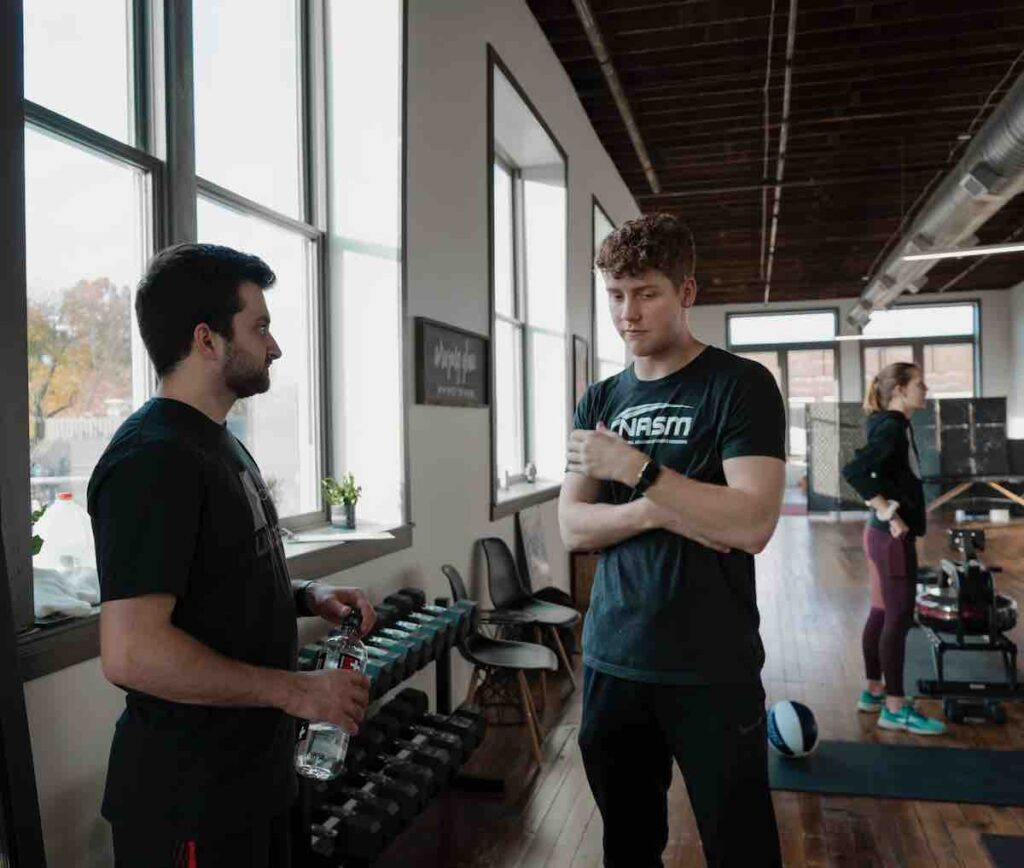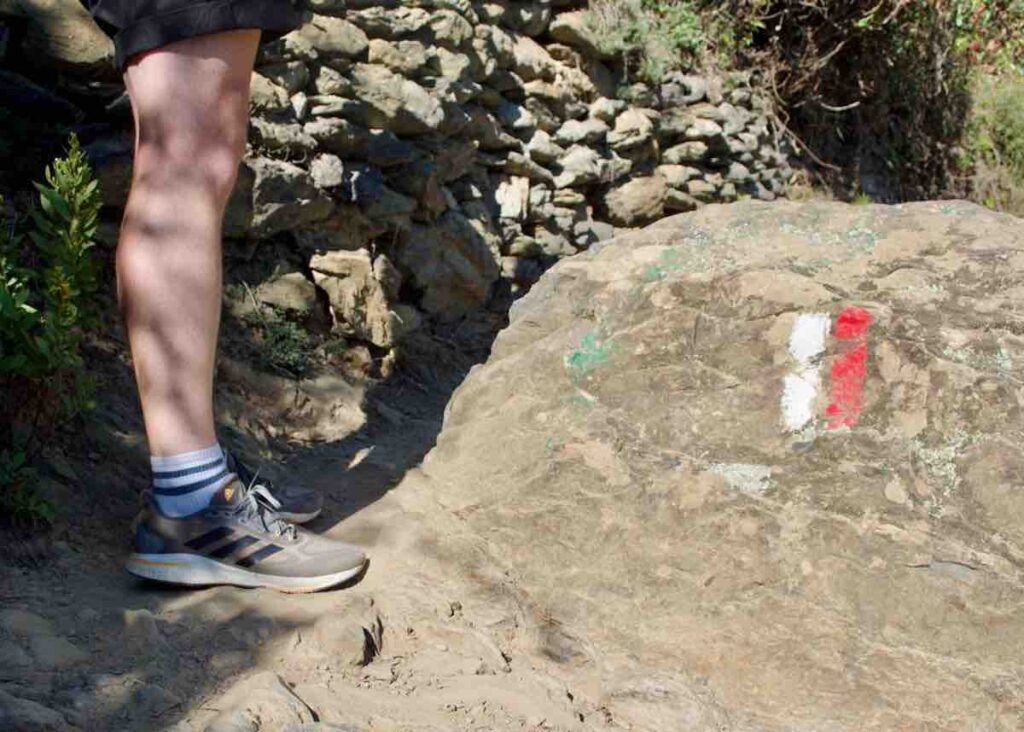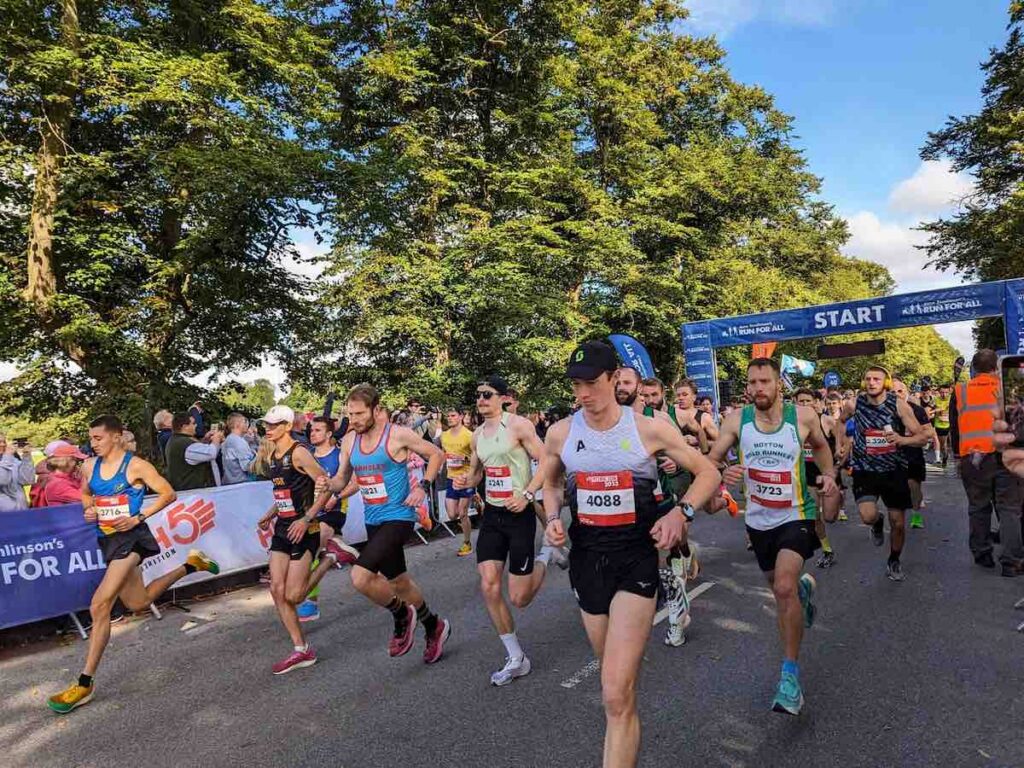Running is beautifully simple. You put one foot in front of the other. There’s very few barriers. Physical, financial or otherwise. Improvement is almost guaranteed.
Running is easy to start and get better at, right?
Truth be told, running is hard for all of us at first or after a break.
In this article we’ll explore why is running so hard some days versus others.
The different triggers behind a physically or mentally challenging run. Plus, how you can break through the wall and fulfill your true running potential.
We’ll cover the main obstacles, from lack of motivation, to burning lungs, niggling injuries, and carrying extra body weight. You’ll find breakthroughs in knowing how the body adapts to a new running routine, energy levels throughout the day, setting goals and accountability, even the weather.
Why Stick With Running When It’s Hard?
I want to address this upfront because running has given me so much.
For me, running is the ultimate pastime.
It weaves together much of what’s good in life – adventure, health, mindfulness, nature, community, confidence, elemental awe.
People naturally vary in their initial tolerance and it’s easy for beginner runners to focus on the struggle.
However, as almost every seasoned runner will tell you, your aerobic fitness, pace and satisfaction levels explode after the first few weeks. Every run brings incremental gains as you get fitter, faster, and start to enjoy running for its softer benefits. A workout of the body, mind and soul.
So, stick with with it. I promise, running does become easier and will become a lifelong friend. I say this as somebody who starting running again at 40.
Related reading: Guide to Setting New Running Goals in 2024
Why is Running So Hard For Me Some Days?
I’ve thought long and hard about my own running journey. There’s some core reasons why running feels hard:
- Sudden increase in workout intensity
- No running mojo or accountability
- Boring routes and stimulation
- Running when hungry or thirsty
- Repetitive training routines
- Overtraining without rest days
- Not yet part of your identity
💌 Inspiring Run Stories.. in Your Inbox
10 Tips for Making Running Easier and More Fun
#1: Fine Tuning Your Body to Run Longer Distances
Granted, taking up running can be a real shock to the system.
Burning lungs and a pounding heart. Your body working hard to pump oxygen and nutrients to fuel your workout. The occasional cramp. Needing to walk, slow jog, or stop for a rest. Generally feeling out of shape or unfit.
We’ve all been there, wondering “Why is running so hard?”
The good news is this discomfort is a positive sign. The epic health benefits of running are unlocked the moment your physical activity hits a pace and intensity that pushes your heart, lungs, and muscles to new limits. What’s more, you can quickly see improvement – often by your 5th to 10th run.
A general rule of thumb is that you should not increase your mileage from one week to the next by more than 10%. I’d recommend following a structured run program, such as Couch to 5km, or compounding your runs every other day for two weeks. Other cardio sports can help too.
You’ll find your cardiovascular and muscular endurance quickly builds up, as your heart, lungs and leg muscles are able to carry you further. Your blood flowing far more freely. Your breathing becoming easier and more efficient. Your lower body muscles strengthened for greater use, speed and good technique. Running doesn’t need to be hard on the body for long.
For me, the fast pace of progress when taking up running again is hugely rewarding. I want you to feel it too. Be beat but not beaten when running is hard.
#2: Hire a Coach for Guidance and Accountability

For many people, hiring a running coach or paying for bespoke training plan might seem OTT. An expensive luxury for something that’s as simple as putting one foot in front of the other. Thanks to online running coaching apps expert advice has never been more accessible and affordable.
Serious running is hard but hiring a good running coach will also do more than improve your running. Your tailored training schedule will come with guidance and coaching on how to eat healthier, recover faster, prepare for race day, achieve personal records, and improve your overall conditioning.
Plus, if you’ve taken some time out, a running coach can map out how to get back into running and rediscover your best.
Read on: How Much is a Running Coach?
#3: Mix Up Your Routes or Company For More Fun

Motivation escapes us all from time to time. Here’s some running tips I find useful when things become too hard or boring:
- Find your why – is it for physical fitness, mental clarity or to raise money for charity?
- Ditch the treadmill for other terrains – trail running or coastal routes (e.g. Flamborough Head walks or runs) are my favorites as you’re immersed in nature
- Consider swapping solo runs for company – either a running group or running buddy
- You could mix up your training schedule – alternate easy and hard or hill running
- Combine running with another activity – such as collecting litter (a.k.a. as a “Plogger“) or visiting heritage sites (e.g. Kirkham Priory circular walk)
- Try running at different times of day – I’m a big believer in the life-changing benefits of a morning run
- Take more photos when running – turn wander into wonder with an awe run
- Running with your dog – an unexpected joy that I wasn’t expecting, even if he is a big erratic
- Tapping into why running makes you happy – then prioritise this over speed
Don’t be deterred if some days leave you asking ‘Why do I find running so hard?’. The most important thing is to be curious about your running technique and mindset. Therein lies the answer.
Read on: How to Make Running Fun Again
#4: Properly Fuel Your Runs When Running Hard
It’s amazing what a difference adequate calories and carbohydrates make. Don’t shy away from eating before, during and after your run.
Carbohydrate rich snacks can work wonders – think pasta dishes, bananas, bagels, or energy bars if on the go.
Timing your food intake before exercise is also very important. You can go much further on a day’s full calorie intake versus an empty stomach when you wake up. Ideally, eat a couple of hours in advance to your runs to give your body time to digest the nutrients needed to fuel your leg muscles.
Stay hydrated too, particularly when running in hot weather. I opt for a running backpack over the faff of a handheld water bottle. These days, there’s plenty of cafés and restaurants that will let you top up your own water bottle or supply for free.
#5: Embrace Rest Days, Especially When Injured
If you’re anything like me, running started out of necessity, before quickly becoming a habit, an obsession, then an addiction. I now run or walk 10km daily. However, I also try not to overdo it.
When you run hard, your body releases endorphins and other neurotransmitters, such as dopamine and serotonin. These chemicals play an essential role in creating the sensation known as “runner’s high.” Endorphins act as natural painkillers, reducing discomfort and allowing you to push through physical barriers over many miles.
Dopamine and serotonin are responsible for regulating mood, enhancing feelings of happiness and wellbeing. As you get into running, your brain associates this physiological response with the activity, increasing your desire to run more often.
To prevent running addiction, maintain a healthy balance in your training routine. Incorporate a variety of physical activities, not just running, to keep your fitness journey enjoyable and well-rounded. It’s crucial to listen to your body and know when to slow down or take a break.
- Set realistic goals for yourself
- Stick to a regular schedule, and avoid overtraining
- Include a rest day in your exercise routine
- Resist the temptation to return before fully recovered from an injury
- Mix in other forms of exercise like strength training, swimming, or yoga
- Get to know your body and any new niggles
#6: Mix Things Up With Other Physical Activity
Breaking up your runs with other types of physical fun can have huge benefits.
In addition to the mental lift, active recovery exercises can speed up recovery from intense exercise sessions or longer distances when tired muscles can experience delayed onset muscle soreness (or DOMS). This stiffness will otherwise often prove debilitating for a few days post-training. All it takes is a gentle jog at 30-60% of your maximum heart rate to loosen up and flush toxins from the body.
Examples of active recovery activities include walking, swimming, cycling, yoga or light cross training sessions.

#7: Run to New Playlists or Podcasts
Sometimes you just need the right stimulation.
As most runners will know, good music is the ultimate companion for any marathon training plan.
I find solo runs a great opportunity to play new Spotify playlists or catch up on latest episode of my favorite podcasts. Music also keeps me entertained and motivated, and I enjoy the virtual company on longer distance runs.
The opposite can be true. There’s also times when I choose to run without music. In total silence.
Running without music allows you to focus more on your surroundings and your body’s movements. The absence of distraction helps cultivate an increased sense of awareness, enabling you to tune into your breathing, foot strikes, and heartbeat. This can be particularly beneficial for improving your running form and appreciating how far you’re coming with each run.
In short, switching up your running habits can pay dividends, from the first mile to the last.
💌 Inspiring Run Stories.. in Your Inbox
#8: Enter a Race – the More Fun or Unusual the Better

When your legs feel tired, it helps to have a good reason to keep going.

Join a race that scares you or motivates you or has a sense of adventure to it, like a fun run (e.g. the win stops at the Marathon Du Malton 10km) in an amazing setting or your first team obstacle course.
Or you could enter an old fashioned marathon or half-marathon. They are a great way to challenge yourself, focus, and push your limits. Training for a marathon requires dedication, discipline, and a well-planned training program. You’ll get a real buzz as you increase your mileage and learn more about your body by incorporating speed work and strength training into your routine.
There’s so much choice these days, with plenty of organized runs for beginner runners. Semi-hard goals, in which to tackle long distances at an easy pace and a more relaxed atmosphere.
#9: Invest in a Good Pair of Running Shoes
Another win for running is it involves no special equipment.
However, to ensure a comfortable and injury-free running experience, I’d recommend losing the Converse. It’s easy to fall into the ‘Why do I find running so hard?’ trap in inappropriate footwear.
Choose a good pair of running shoes that provide adequate support and cushioning for your feet. There are various types of running shoes tailored to different foot shapes and running styles, so take the time to find the perfect fit for you. You may also want to visit a specialty running store to get a professional fitting and personalized recommendations.
Every step taken in sneakers past their best will make your run harder and less enjoyable.
#10: Learn to Love Running Whatever the Weather

Most of us start as fair weather runners. Defaulting the the treadmill when it rains.
Running’s beauty is it’s a year-round sport. Bad weather runs are also the most rewarding.
As temperatures rise in Summer, the hot weather doesn’t have to dwindle your appetite for outdoor running. In fact, running in hot weather can be both enjoyable and beneficial to your fitness, as long as you take the appropriate precautions. The same is true of running in the cold and running when it’s raining or snowy runs.
Majestic white landscapes. Crisp, cleansing air. More peaceful running routes. Better sunsets and sunrises. Hot soups after a cold run. I’m a convert to running in the cold!
Hard winter yards are also when stamina is formed.
Read on: The Benefits Of Jogging Everyday
Is Running Hard? Yes, and It’s a Good Sign…
We all started as a newbie runner. Yes, it’s difficult at first but also incredibly rewarding. As you start to build up your distance and set and break through targets, you learn what you’re truly capable of and dream bigger. Running progress fuels self-belief that bleeds into the rest of your life. More seems possible. You grow as an individual, an in turn crave bigger challenges and adventures. Ultimately becoming the best version of yourself.
Take the struggle as a sign of growth and view running as therapy for the currents of life.
Embrace the Times You Ask Yourself: ‘Why Is Running So Hard?’…
If you’re reading this, it’s likely you’ve only got a fleeting relationship with running. The odd jog round the block, token fun run, or sprint as part of another sport.
It’s unlikely to be a question of how to start running, but rather how to make running easier once it becomes hard. Hard miles is where strength and stamina are built.
There’s no silver bullet, only mastering the basics.
From building your cardiovascular system and leg muscle strength to setting medium to long-term goals. Mixing up tired routines and treating running as more of an adventure. Even investing in the right running gear. It all makes a difference.
Start slowly, stay consistent, and you’ll develop a lifelong love of running before you know it.

